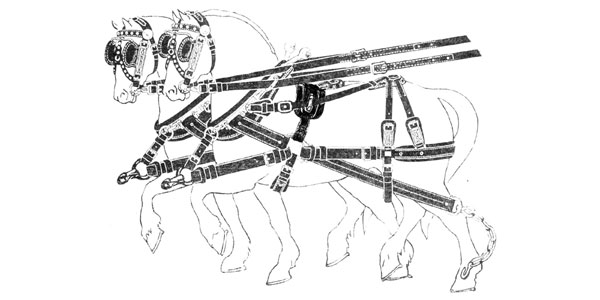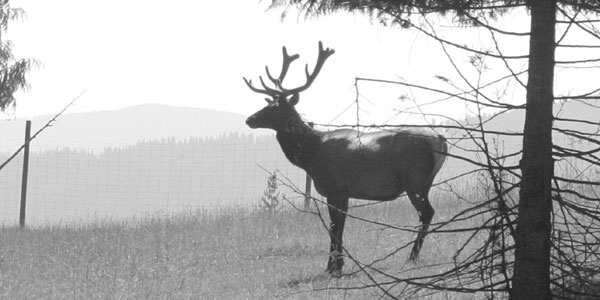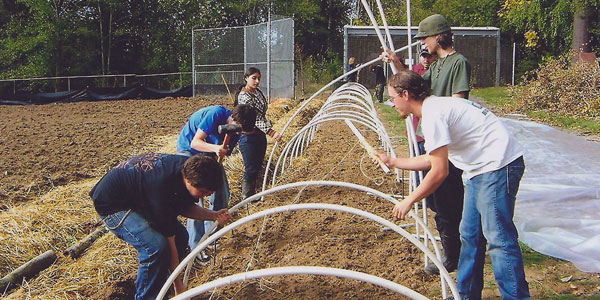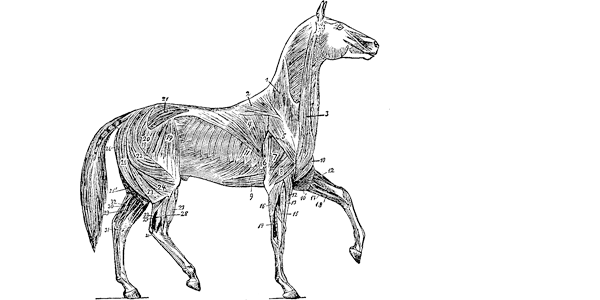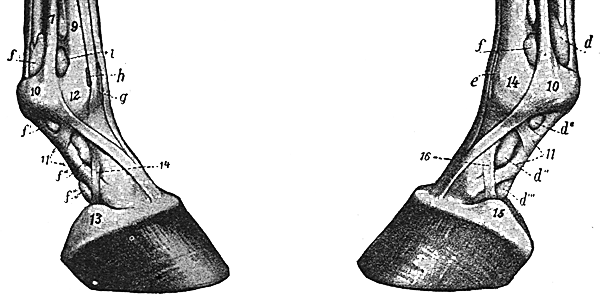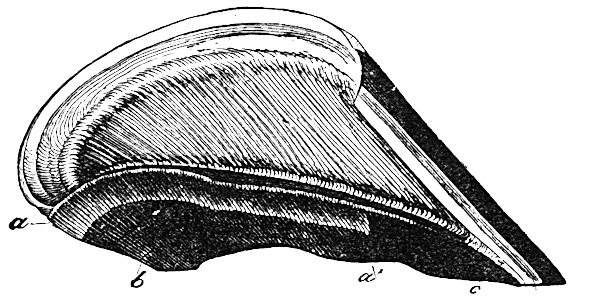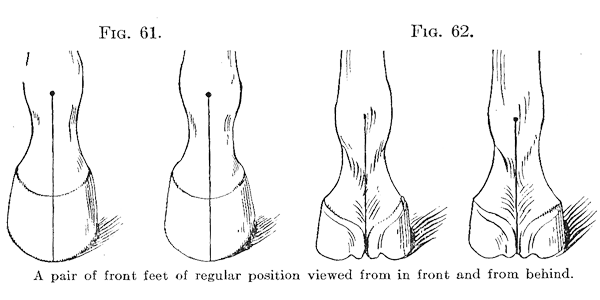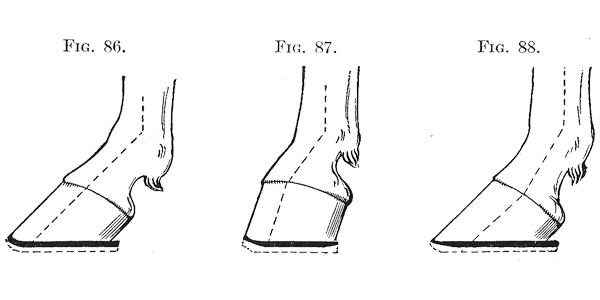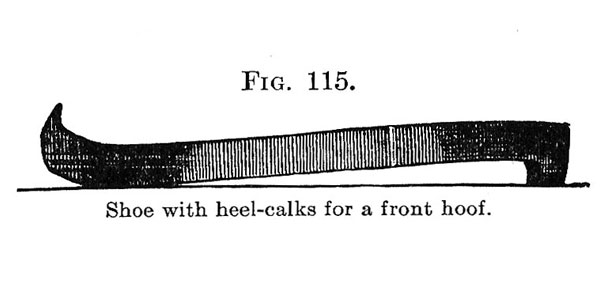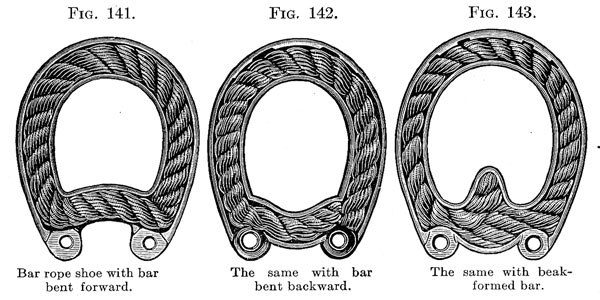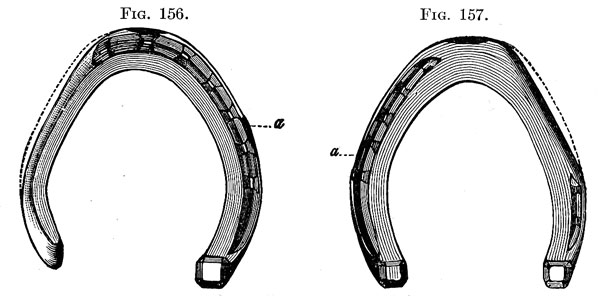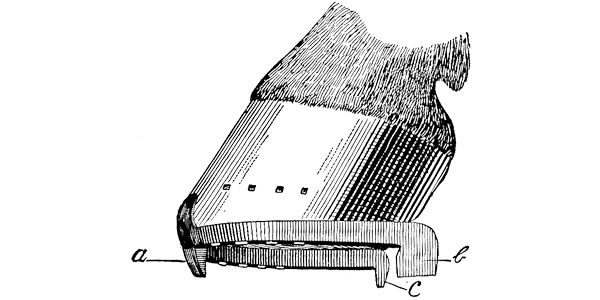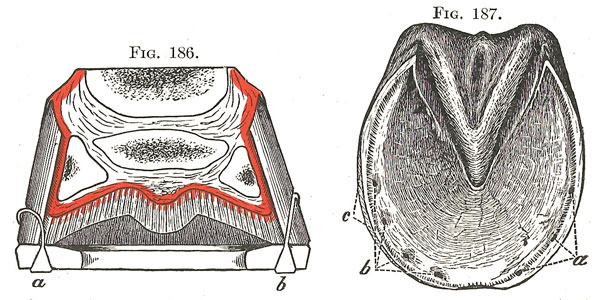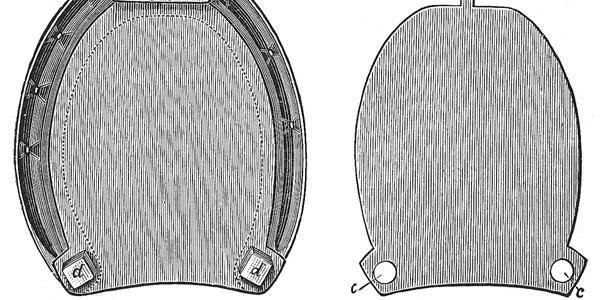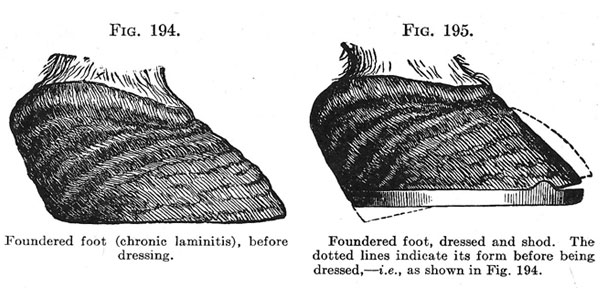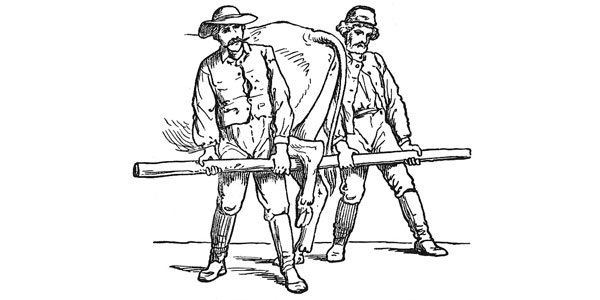John W. Adams
Horseshoeing Part 1A
Horseshoeing, though apparently simple, involves many difficulties, owing to the fact that the hoof is not an unchanging body, but varies much with respect to form, growth, quality, and elasticity. Furthermore, there are such great differences in the character of ground-surfaces and in the nature of horses’ work that shoeing which is not performed with great ability and care induces disease and makes horses lame.
Horseshoeing Part 1B
Since the horse is useful to man only by reason of his movements, his foot deserves the most careful attention. The horse-shoer should be familiar with all its parts. Fig. 3 shows the osseous framework of the foot, consisting of the lower end of the cannon bone, the long pastern, the two sesamoid bones, the short pastern, and the pedal bone.
Horseshoeing Part 1C
The horn capsule or hoof is nothing more than a very thick epidermis that protects the horse’s foot, just as a well fitting shoe protects the human foot. The hoof of a sound foot is so firmly united with the underlying pododerm that only an extraordinary force can separate them. The hoof is divided into three principal parts, which are solidly united in the healthy foot – namely, the wall, the sole, and the frog.
Horseshoeing Part 2A
As there are well-formed and badly formed bodies, so there are well-formed and badly formed limbs and hoofs. The form of the hoof depends upon the position of the limb. A straight limb of normal direction possesses, as a rule, a regular hoof, while an oblique or crooked limb is accompanied by an irregular or oblique hoof. Hence, it is necessary, before discussing the various forms of the hoof, to consider briefly the various positions that may be assumed by the limbs.
Horseshoeing Part 2B
If we observe horses moving unrestrained over level ground, we will notice differences in the carriage of the feet. Many deviations in the line of flight of hoofs and in the manner in which they are set to the ground occur; for example, horses heavily burdened or pulling heavy loads, and, therefore, not having free use of their limbs, project their limbs irregularly and meet the ground first with the toe; however, careful observation will detect the presence of one or the other of these lines of flight of the foot.
Horseshoeing Part 2C
The wear of the shoe is caused much less by the weight of the animal’s body than by the rubbing which takes place between the shoe and the earth whenever the foot is placed to the ground and lifted. The wear of the shoe which occurs when the foot is placed on the ground is termed “grounding wear,” and that which occurs while the foot is being lifted from the ground is termed “swinging-off wear.” When a horse travels normally, both kinds of wear are nearly alike, but are very distinct when the paces are abnormal, especially when there is faulty direction of the limbs.
Horseshoeing Part 3A
An examination should be made while the animal is at rest, and afterwards while in motion. The object of the examination is to gain accurate knowledge of the direction and movements of the limbs, of the form and character of the feet and hoofs, of the manner in which the foot reaches and leaves the ground, of the form, length, position, and wear of the shoe, and distribution of the nail-holes, in order that at the next and subsequent shoeings all ascertained peculiarities of hoof-form may be kept in mind and all discovered faults of shoeing corrected.
Horseshoeing Part 3B
Besides good, tough iron for the shoe, we need an anvil with a round horn and a small hole at one end, a round-headed turning-hammer, a round sledge, a stamping hammer, a pritchel of good steel, and, if a fullered shoe is to be made, a round fuller. Bodily activity and, above all else, a good eye for measurement are not only desirable, but necessary. A shoe should be made thoughtfully, but yet quickly enough to make the most of the heat.
Horseshoeing Part 4A
According to the size of the horse and his hoofs the nails should be driven from five-eighths to an inch and five-eighths high, and as even as possible. As soon as a nail is driven its point should be immediately bent down towards the shoe in order to prevent injuries. The heads of all the nails should then be gone over with a hammer and driven down solidly into the nail-holes, the hoof being meanwhile supported in the left hand.
Horseshoeing Part 4B
Forging is that defect of the horse’s gait by reason of which, at a trot, he strikes the ends of the branches or the under surface of the front shoe with the toe of the hind shoe or hoof of the same side. Forging is unpleasant to hear and dangerous to the horse. It is liable to wound the heels of the forefeet, damages the toes or the coronet of the hind hoofs, and often pulls off the front shoes.
Horseshoeing Part 5A
All shoes whose ground-surface is provided with contrivances to prevent slipping upon snow and ice are called winter shoes. These various contrivances are produced by several processes called “methods of sharpening.” All methods may be gathered into two groups, – namely, practical sharp-shoeing and impractical. Only the first will be considered.
Horseshoeing Part 5B
Hoof nurture comprises all those measures which are employed to keep hoofs healthy, elastic, and serviceable. The object of hoof nurture is to lessen or entirely remove all these injurious consequences of shoeing and stabulation. It comprises, therefore, not only the proper shortening of the hoofs every five to six weeks, but careful attention to cleanliness and moisture. Both are insured by dry straw and daily picking out and washing the hoofs.
Horseshoeing Part 6A
The boundary between health and disease of the hoof is difficult to determine, especially when we have to deal with minor defects of structure or shape of the hoof. Ordinarily, we first consider a hoof diseased when it causes lameness. However, we know that diseases of the hoof may exist without lameness. Therefore, a hoof should be regarded as diseased or defective when it deviates from what we consider as normal or healthy, whether the service of the animal is influenced by it or not.
Horseshoeing Part 6B
Wounds of the velvety tissue of the sole or of the podophyllous tissue of the wall, caused by nails which have been driven into the hoof for the purpose of fastening the shoe, are usually termed “nailing.” We distinguish direct and indirect nailing; the former is noticed immediately, the latter later.
Horseshoeing Part 6C
The expression “corns” is applied to nearly all bruises of the pododerm of the posterior half of the foot, with the exception of the frog, which are apparent to the eye as yellowish, reddish, or bluish-red discolorations of the horn of the sole and white line. The surface of the pododerm (fleshy leaves and villi) is chiefly involved, and almost without exception there is rupture of small blood-vessels and an outpouring of blood between the pododerm and the horn.
Horseshoeing Part 7A
The upright or stumpy hoof is that form in which the quarters, with relation to the toe, are too long (too high). The wall at the toe stands very steep, in some cases perpendicular, and is strongly worn away by standing and travelling. It may arise gradually from neglect of the hoofs of horses running barefoot. It may arise from excessive shortening of the toe in relation to the quarters.
Horseshoeing Part 7B
According to location we distinguish toe-cracks, side-cracks, quarter-cracks, and bar-cracks. Those cracks which affect only the upper border of the hoof are called coronary cracks; those which are limited to the lower border of the hoof are sometimes designated low cracks (plantar cracks); while those which are continuous from one border to the other are called complete cracks. If the crack passes through the entire thickness of the wall to the sensitive tissues underneath, it is called a deep or penetrating crack, in contradistinction to the superficial crack.
Horseshoeing Part 7C – Shoeing Mules, Asses & Oxen
The shoeing of oxen is essentially different from that of horses, because the foot of the ox is cloven (split), the long pastern, short pastern, and hoof-bone are double, so that, instead of one hoof or claw, there are two upon each foot, distinguished as outer and inner. Each claw consists of wall, sole, and bulbs; the frog is absent. The wall is considerably thinner than that of the horse’s hoof, the sole is thin, and the bulbs are low. For these reasons the shoe designed for a claw must be thin, but wide.

